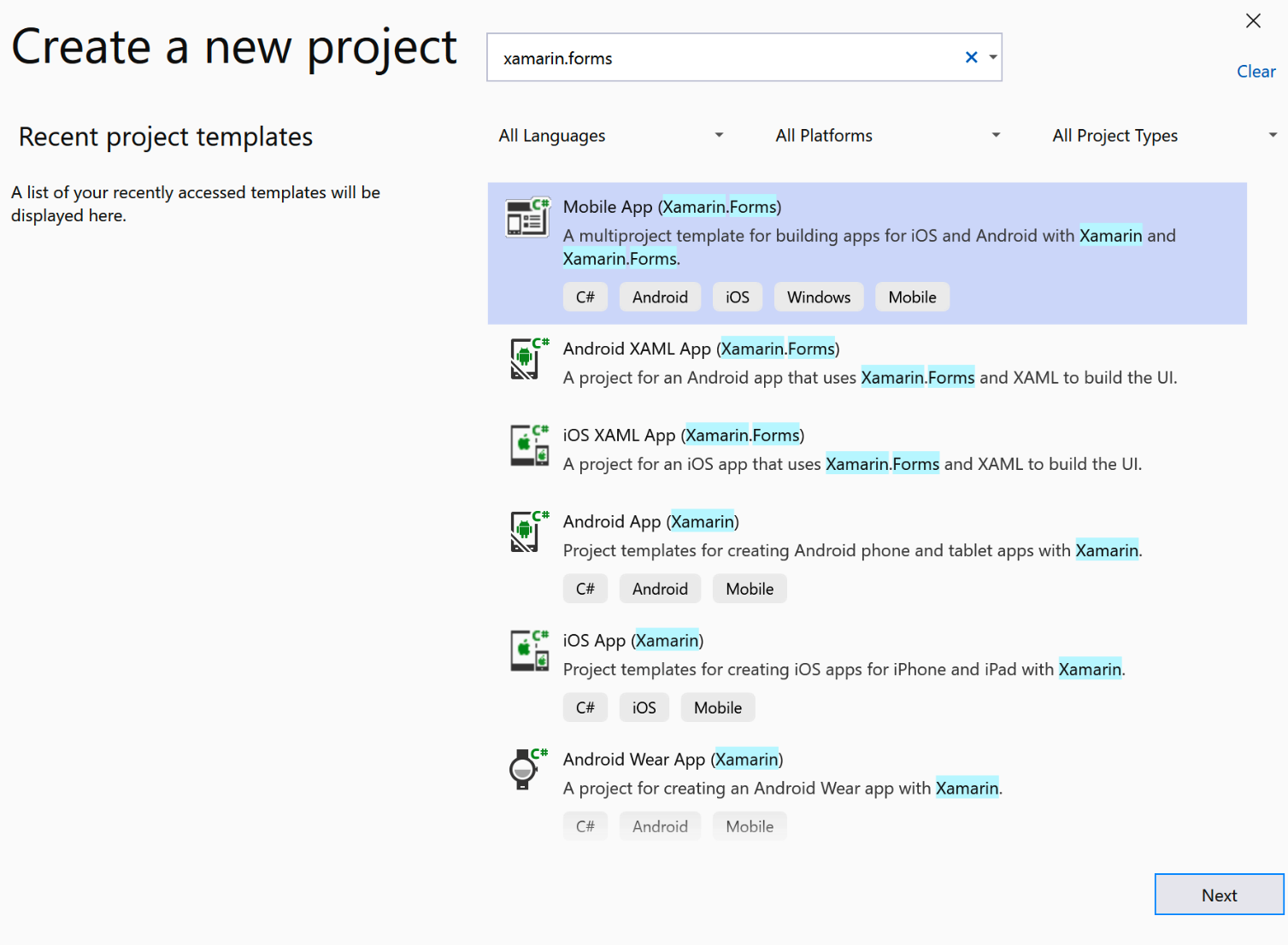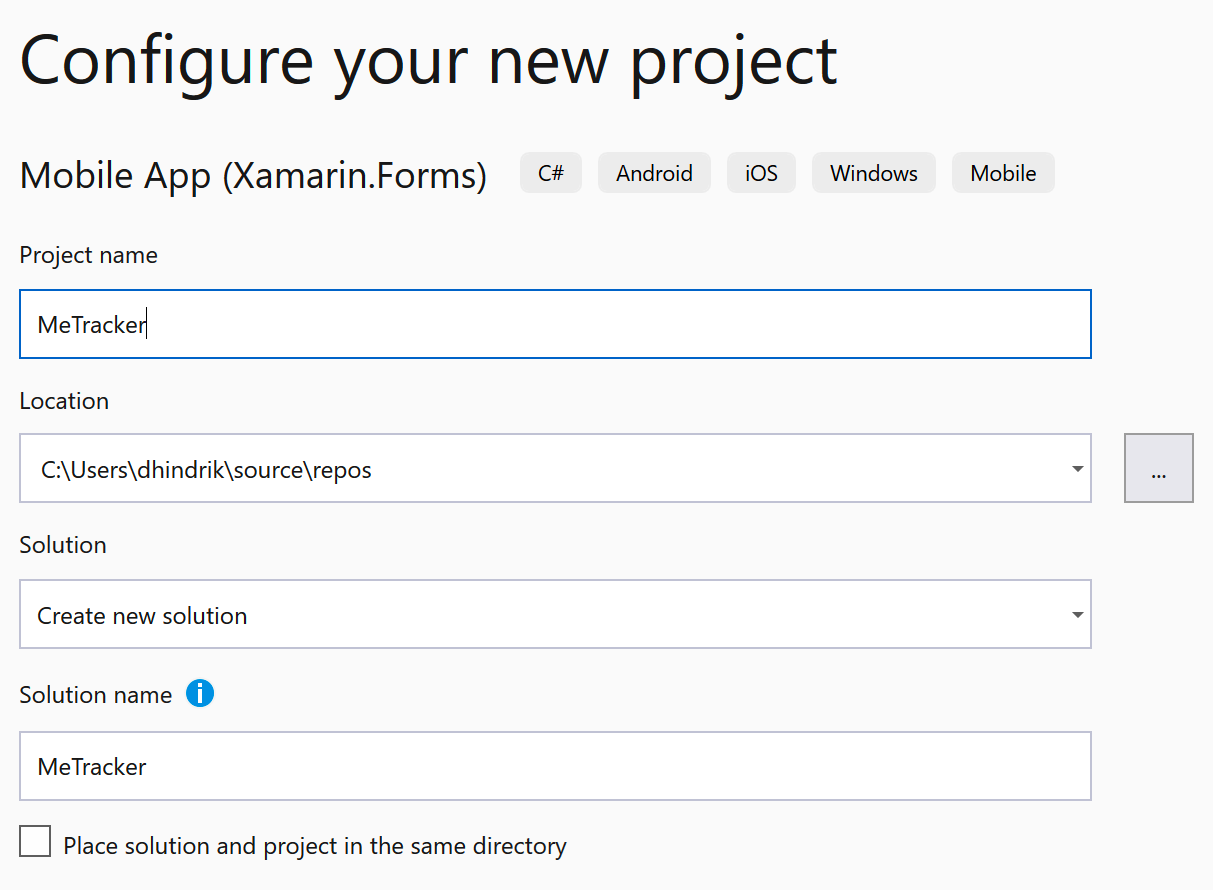It's time to start building the app. Use the Mobile App (Xamarin.Forms) template. The easiest way to find this template is to search for xamarin.forms in the search bar at the top of the dialog that appears when you start Visual Studio:

We will name the project MeTracker:

We will use the Blank template and build for the Android and iOS platforms:

Make sure that you are compiling using Android version Oreo (API level 26) or higher. We can set this in the project's Properties, under the Application tab.
Update the NuGet packages that were added by the template to make sure that we're using the latest versions.
Creating a repository to save the locations of our users
The first thing we will do is create a repository that we can use to save the locations of our users.
Creating a model for the location data
Before we create the repository, we will create a model class that will represent a user location. Follow these steps to do so:
- Create a new...



